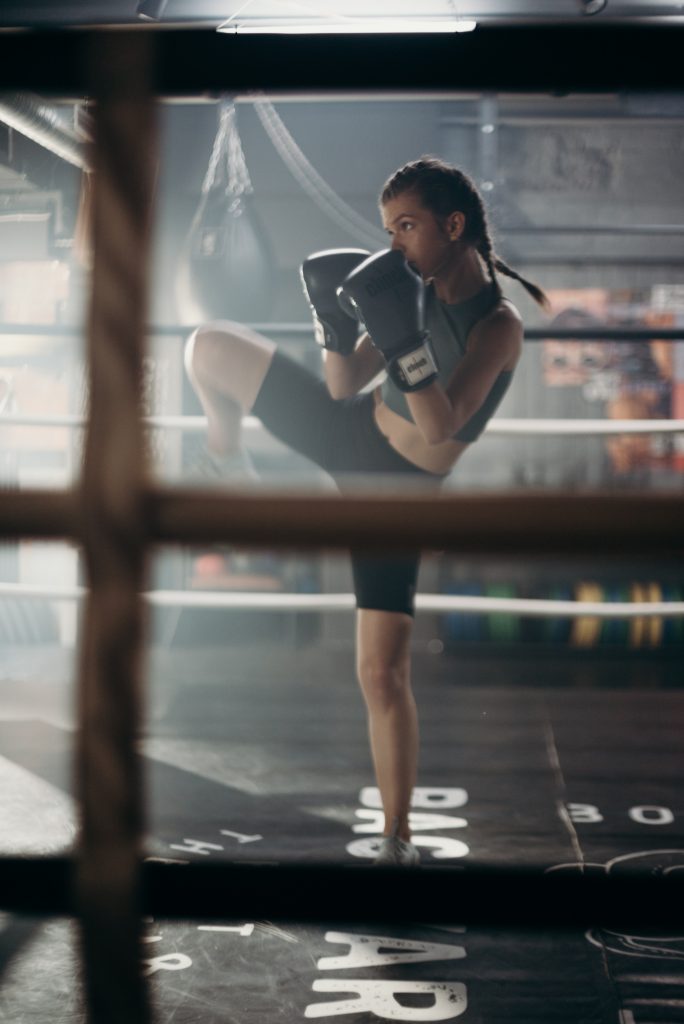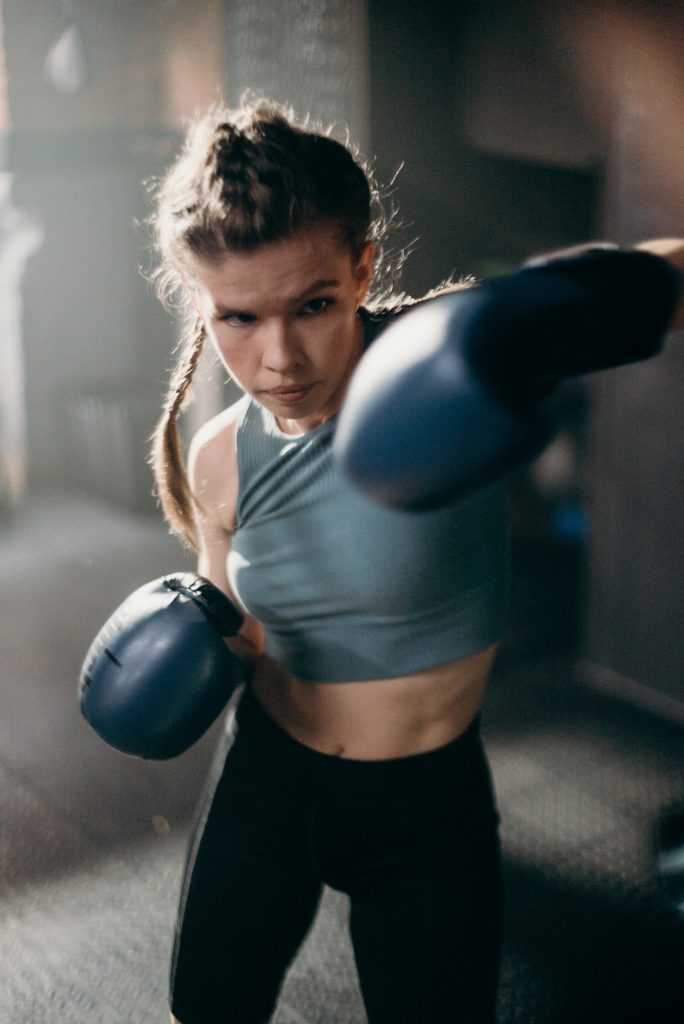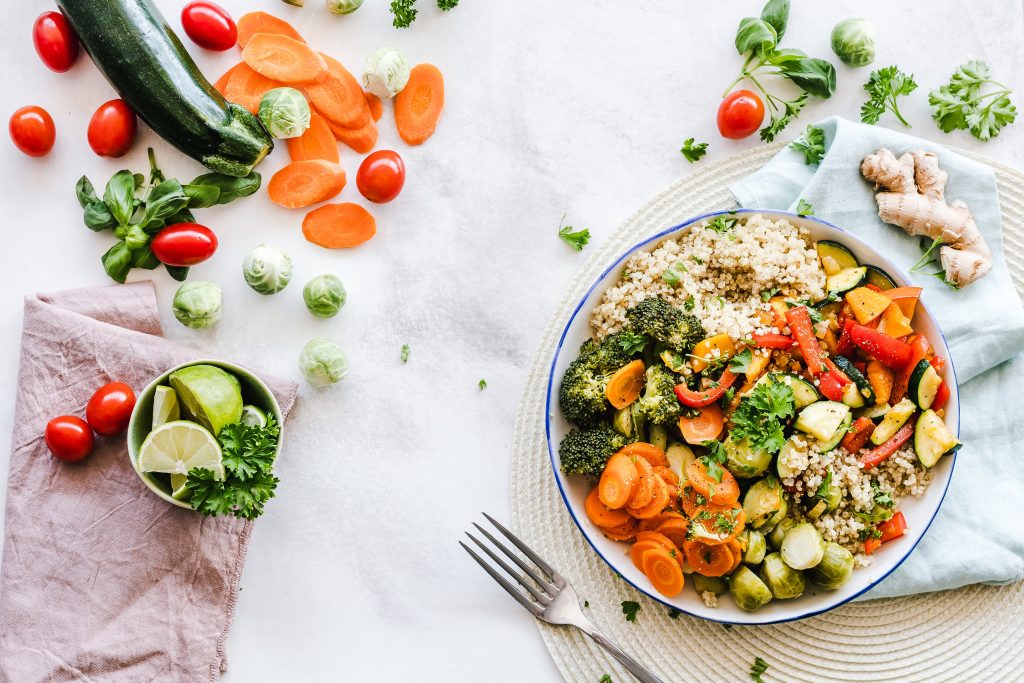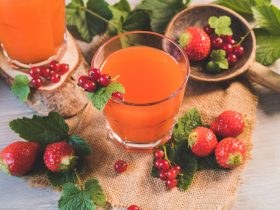There are various benefits of a Boxer’s diet. It is high in protein (for muscle repair), and high in Omega-3 Fatty Acids from fish oils to reduce inflammation and prevent sore muscles after training/sparring. We’ll go in-depth on a healthy diet that aids weight loss for boxing and what to eat throughout the day if you’re boxing. Read on to find out what you need to be eating for your boxing training and to help you lose weight. Find out what boxers eat on a boxer diet and what kind of nutrition plan to follow.

Before reading this article and attempting to change your current diet, please make sure you have a handle on what nutrients you need and are currently getting. If you don’t know this, please speak with a nutritionist or registered dietitian to figure out your needs. For more on healthy diets, check out our articles on fresh juice recipes for diabetics and how to create a healthy meal.
Why is a boxer’s diet beneficial?
Boxing requires great fitness and stamina, which can only be achieved through an optimized diet. Boxers must be eating the right amounts of carbs, fats and vitamins etc to ensure good health and nutrition. This will not only help with energy throughout the day but also reduce the risk of injuries allowing for quality training sessions.
After a workout, the body’s muscle cells require nutrients to repair themselves. Without adequate nutrition, your muscles will take what they need from non-essential tissues (tissues not involved in a movement like your organs). This leads to compromised liver and kidney function.
What is a standard boxer’s diet?

In general, a boxer’s diet is lower in fat and higher in protein than the average diet. What you eat should be appropriate to your weight and training schedule. Use common sense when adjusting your daily food intake to avoid over-or under-eating.
Training is usually divided into three phases: increasing fitness; conditioning for fight competition; and maintaining a competitive fighting weight. During the increasing fitness phase, you are gaining strength and endurance. You need more food to build muscle tissue. Try to eat lean meats, lots of fruits and vegetables, whole-grain bread and cereals.
Training phases
During conditioning for fight competition, your calorie intake should be about 70 per cent maintenance calories. During this phase, you begin to increase your muscle mass and decrease fat so you are more effective in the ring. You will have trouble gaining weight because your energy intake is still high while trying to maintain a low-fat diet.
During the competitive fighting weight phase, you want to consume a calorie-restricted diet along with exercising to lower your fat to a specific level. A diet of 1200 calories per day along with four hours of morning and afternoon exercise daily should help you get down to the 10 per cent body fat range for most weight classes.
To remember

During each phase, it is important to maintain an adequate calcium intake through dairy products. In addition, be sure to include several servings of proteins (such as chicken, fish and eggs) each day to support growth needs.
While fighting in the ring, you burn more energy than it does during standard workouts. Avoid eating large meals before a fight because they will slow down your reflexes and decrease coordination…
What does a boxer have for breakfast?
Breakfast should consist of high protein foods: steak, bacon or ham and eggs if you like; but definitely no unhealthy carbs–no cereal no toast. And that includes pancakes too! After training hard all night, a fighter needs to be eating this food to rebuild his strength.
But one must also remember that a boxer is an athlete, so even though his diet may not look like it, there will be training going on. After breakfast, the boxer will go out and run around the block.
What does a boxer have for lunch?

1-14 portions of fish per day: 0.5kg to 1.0kg (this is approximately 2 pounds) plus meat with every meal; an equivalent amount of other food products such as meat, meat products, eggs.
2-3 portions of vegetables per day: 150-200g (approximately 1/2 lb). The amount of fresh or frozen vegetables may be increased, as long as the salt content is not increased accordingly.
4-5 portions of legumes: 200-250g (approximately 1/2 lb)
5 portions of fruit per day: 150-200g (approximately 1/2 lb)
In total, the boxer should eat 4 to 5 kg a day. They must avoid carbs and fats in small amounts as they produce an acid environment inside them, which is harmful to athletes.
What does a boxer have for dinner?
It could be something simple like steamed vegetables and whole-grain pasta etc. The diet of the boxing athlete is far removed from that of other athletes. In fact, even a cursory examination reveals numerous differences. Why is that? Because the boxing athlete doesn’t eat for energy, he/she eat to build muscle.
That’s right: the boxer is unique amongst athletes in that they must build lean muscle mass and keep their fat at a minimum. The most efficient way to do this is by following a “clean” high carbohydrate diet.
Last meal of the day
The benefits of a boxer’s diet are numerous. Eating well before hitting the ring… or even the gym, for that matter, is obviously a good idea. But what about after your training session or fight? What should you eat to recover?
If you followed a smart workout plan, the best thing to do is go home and eat! Yes, it’s true; skip exercise and get something healthy inside you instead. Here’s why: your muscles are craving nutrients to help them recover from the stress of training. If you don’t refuel those muscles with food, they’ll cannibalize themselves for energy and leave you feeling weaker than if you had replenished them. This aids recovery.
What foods should a boxer’s diet exclude?
- Avoid Fried Foods
Fried foods should be the first thing that you can avoid. Boxers need to control their weight, and fried foods will only make them fatter than they are and it is not healthy for a boxer’s physique at all. It is best to avoid deep-fried foods such as fries or onion rings.
- Avoid Sugar
Fruit juices and soda pop have a lot of sugar in them, so if you’re having this drink every time you should remember that it has a lot of sugar and fruits are better than sodas therefor avoiding too much juice will be good for your health.
Also, avoid beer on the night before a major match. Beer is high in carbs and it tends to get you bloated, which will make you sluggish the next day. Beer is full of sugar too and also has alcohol as well, which will cause dehydration.
- Avoid Processed Foods
Boxers need to pay attention to what they eat. The processed foods you need to avoid are the ones that have a lot of sodium in them, such as cheese or canned soups.
- Avoid Spicy Foods
Spicy food can cause acid reflux and upset stomachs. If you’re having any heartburn when boxing or training, it’s best to avoid spicy foods
- Avoid Bad carbs
There is a great deal of confusion about carbohydrates and their role in energy production. One of the reasons for this confusion is that modern nutritionists have failed to study or understand the metabolic pathways and characteristics of carbohydrate metabolism. Thus they cannot explain how some dietary carbs are beneficial (such as certain vegetables) and others are harmful (such as most sugars).
Simple Carbohydrates
Most sugars and simple carbohydrate foods (the bad carbs) are broken down into glucose and absorbed directly into the bloodstream. A typical meal of meat, vegetables, nuts, and seeds will provide sufficient nutrition to satisfy appetite but not such an abundance that it inhibits ketosis or the use of fat for energy.
The excess protein is converted by the liver into either glucose (if more glucose is needed) or into fat. If more proteins than necessary have been consumed, then some of them will be converted and stored as body fat.
Examples of bad carbs
The term bad carb refers to a category of foods that includes sugars, white bread, potatoes, beans and others that have little nutritional value. These foods are called bad because they commonly cause weight gain (because of their high-calorie content).
They also commonly produce a “blood sugar roller coaster” which leads to chronic fatigue, overeating, and obesity. Boxers who train heavy six days per week consume a lot of calories. These boxers can’t afford to be on a blood sugar roller coaster.
Good carbs (complex carbohydrates)
What Are Good Carbs for Boxers?
Boxing is a tough sport that requires lots of energy to help you keep up with your workout routine and put on fight-winning performances. You might be looking for the best sources of carbohydrates when you are training hard or preparing for an important match. Here are some good choices to consider.
Oatmeal
Boxers who are looking for the most important carbohydrates should choose oatmeal as their breakfast food. It is a great source of fibre, which helps fill you up. You can also make it more exciting by adding fruits and other toppings that you enjoy. The best results will come if you eat this cereal at least one to two hours before you work out.
Fruit
Boxers who want to stay in great shape should eat fresh fruit every day. Certain varieties are better than others when it comes to carbohydrates. Bananas and apples are two good examples to focus on. Your coach might not allow you to eat these before a match, but it is a good idea to have some during your downtime or when the day’s practice session has ended.
All of these fruits contain beneficial carbohydrates that help you stay strong during long workouts or matches. They are also full of vitamins and nutrients that keep you healthy.
Whole Grains
Boxers should choose whole grains for their carbohydrates as often as possible. Some great examples of these healthy carbohydrates include oatmeal, whole wheat bread and brown rice. These foods are as filling as they are helpful to your boxing performance. Whole grains also have other benefits, including their high levels of fibre and antioxidants.
Beans
Boxers should eat beans regularly to help improve their overall health and endurance. They are rich in carbohydrates, which provides you with energy and helps your body recover. If you do not like the taste of plain beans, consider preparing them in other recipes that you enjoy. For example, if you like Mexican food, try adding black beans to your favourite burrito recipe.
Sweet Potatoes
You can find them in most grocery stores. These delicious vegetables are very high in vitamins and minerals, including carbohydrates that quickly provide energy. They can also help improve your overall fitness levels because they fight fatigue and create lean muscle mass.
The role of water in a boxer’s diet
Water makes up about 60% of the weight of your body.
Every cell needs water to function, and the majority of your brain tissue is made up of it. Water regulates all your bodily processes- from digestion, circulation and blood pressure to waste management, temperature control and respiration.
Hydration
It’s especially important to keep your body hydrated if you are an athlete. As a boxer, you’ll sweat more than most athletes, so dehydration is always a risk. Drink plenty of water before, during and after training sessions or fights to replace fluid loss and avoid headaches or cramps.
The more you sweat, the more water your body needs to replace lost fluids. So if you’re training hard and sweating heavily, make sure you’re drinking enough water each day to keep from becoming dehydrated (Dehydration can lead to severe health risks).
Fluid loss

Boxers who cut weight for fights often don’t eat enough; they can lose up to a third of their body weight by the time weigh-in rolls around. And because food is being burned for energy rather than stored as fat, water loss is magnified and even more important if you’re trying to make weight.
The body can replace fluids lost through sweat, but it must have water to do so properly. The main disadvantage of losing excessive amounts of water is that when you’re dehydrated and don’t replace the lost fluid, your body reduces blood volume, which means less oxygen gets delivered to your muscles and organs. If you want to endure more intense exercise and make it through your training session, you’ll need to replenish that water.
Protein
The protein source that is easiest for most people is meat-based. Common sources of meat-based proteins are red meat, chicken, and fish. Many people wonder whether or not there are vegetarian-based sources (soybeans, tofu, etc.) that can be included in a boxer’s diet plan; the answer is yes! There are a variety of vegetable-based proteins that can provide higher levels of it with fewer calories than animal-based proteins.
Common sources
Cottage cheese, fruit and vegetables are other sources that can be included in a boxer’s diet plan. Most fruits and vegetables contain between 1 gram to 4 grams of protein per 0.25 cup (100g). A common way to incorporate fruit and veggies into the boxer’s diet plan is by making fresh smoothies out of fat-free yoghurt, frozen fruit, and fresh fruit.
Another way to incorporate fruits and vegetables in their diet is by adding spinach and other leafy greens into their salads, or using them for extra flavour in a soup (e.g., chicken noodle, vegetable beef).
Diet plan

Below are examples of some healthy meals that may include protein sources from the above list:
Breakfast: 2 slices of multigrain bread (150g), 1/4 cup peanut butter (60g), banana, and 8 fl oz. skim milk = 20-35 grams protein.
Lunch: 4 oz tuna in water (80 calories), 6 crackers, baby carrots, cucumber w/peanut dressing = 25 grams protein.
Dinner: 4 oz lean beef (150 calories), 1 cup cooked whole-wheat pasta, green salad with vinaigrette = 28 grams protein.
Try these and other meat-based proteins, which are high in iron for best absorption and usage; turkey breast, lean chicken breast or thigh, white fish such as cod, salmon, and snapper. Also, be sure to choose lean sources of meat (try to avoid the term “fatty” on the label).
Vegetarian sources of proteins
For vegetarian-based sources, tofu is a good source for vegetarians that want to add it into their diets. In addition, vegans can use soybeans or lentils as sources of vegetarian-based proteins. Soybeans are an excellent source of vegetable proteins and contain all the essential amino acids needed by the body. Lentils also contain a good amount of proteins (5 grams per cup).
A variety of vegetables can be used to provide high levels of plant-based proteins, including beans, peas, lentils, tofu, and soybeans. Some vegetables that contain less protein but more calories are potatoes, corn, sweet potatoes, peas and carrots.
Protein in fruits
Fruit sources include dried fruits such as dates (5 grams per date). Other fruits high in protein include pineapple (1/2 cup contains 4 grams), prunes (4.8g per plum), and apricots (4.7g per apricot).
All fruits contain calories, but when counting calories it’s important to consider not just the amount of proteins, but also the number of nutrients including vitamins and minerals that are present in differing foods.
How to introduce more protein into your diet
Choose low-fat and fat-free dairy products like milk and yoghurt. Try to find lean meats that have less than 5 grams of fat per serving; remove the skin from poultry before cooking. Eat seafood such as salmon, shrimp, and tilapia which is high in omega-3 fatty acids known for their heart-healthy benefits.
Fats
The role of fats
The body needs fats to manufacture hormones and vitamin D which helps regulate blood pressure, improve bone health, and protect against different types of cancer. Aside from these essential roles in the body, fats are good sources of energy for athletes who rely on carbohydrates for quick energy supply during their workouts.
Fats also help slow down digestion so your body will have time to absorb nutrients absorbed from carbohydrate-rich foods. The best source of fat is olive oil that helps keep your calorie consumption at a minimum level. Avocados and olives are also great sources of healthy fats that will help maintain low-density lipoprotein (LDL) or bad cholesterol levels in the body.
Fat-rich food you can choose from for a diet plan
Animal fats: butter, cream, pork (lard), chicken, tuna, salmon and egg yolks. Good fats include fish oils and flaxseed oil which provide omega-3 fatty acids that help repair muscle tissue after training and prevent inflammation. Good vegetarian sources of omega-3 include walnuts and canola oil. These are good fats you should try to include.
Avocados, olives and olive oil – 2 tablespoons of olive oil contains about 120 calories while half an avocado has 185 calories; 24 Olives – each olive contains 10 calories.
Nuts (peanuts, almonds, walnuts), seeds (sesame seeds, sunflower seeds) and nut butter (almond butter, peanut butter) – each 1 tablespoon has about 100 to 150 calories; nuts provide 3 to 5 grams of fibre per serving.
Soybeans, soybean oil and tofu – 2-4 grams of fat per serving.
How to increase your fat intake
Replace all refined cooking oils with olive oil. Incorporate natural fats into your diet. Be sure to include nuts and seeds in your daily diet; try sprinkling almonds on your yoghurt for a sweet and salty treat. Add peanuts or sunflower seeds to your salad for added crunch and flavour.
Choose low-fat versions of your favourite snacks and other foods. Add low-fat dressing or soy sauce to your meals for flavour and taste.

All these meal ideas should help you with your boxer’s diet. These meal ideas should help you increase body mass and lose weight. For those doing boxing training, it’s recommended to make a nutrition plan that involves eating around every 3 hours. Some boxers eat every two hours. Make sure you consult a dietitian or doctor before drastically changing your diet to a boxer’s diet















12 Comments